Hokkaido Milk Bread with Tangzhong - We Knead To Bake # 3
la ricetta in italiano qui
Third appointment with We Knead To Bake, the baking group Aparna of My Diverse Kitchen created last January with the very nice idea to bake a different bread every month, 12 breads in all this year.
The choice for this month has gone to a very funny bread with an unusual method of making the dough: Hokkaido Milk Bread, also known as Asian Sweet Bread and Hong Kong Pai Bo, very popular in South Asian bakeries all over the world.
The Hokkaido Mild Bread owes its texture and height to the use of an interesting ingredient called Tangzhong (created by a Chinese woman, Yvonne Chen) where a part of flour and 5 of water are cooked at 65° to form a roux. At this temperature, the gluten in the mix would absorb the moisture and create a leavening action, giving then a lighter and fluffier bread.
I have made a few changes from the recipe Aparna gave us: used oat milk, some oatmeal and extravirgin olive oil, no powdered milk and cream at all (just a little oat milk more if necessary).
I had a little problem with the leavining: it was one night for the first rise and one day for the second! Well, using oatmeal is due a longer time but not so long like that! I suppose my yeast was not very active, not yet expired but probably a long life on my kitchen shelf ... but then it worked!
It's a very versatile dough. Though I did not time to make a second try, Aparna suggests how to make dinner rolls (filled with sweet or savoury fillings). And also how to shape the dough into
knots, or cute little animals such as hedgedogs, alligators, snails or tortoises. Just have a look at her post for more explanations.
You can find a video on making Tangzhong and the bread here.
Original Recipe from 65 Degrees Tangzhong “65C Bread Doctor” by Yvonne Chen, and adapted from Kirbie’sCravings.
1/3 cup all-purpose flour
Whisk together lightly the flour, water and milk in a saucepan until smooth and there are no lumps. Place the saucepan on the stove, and over medium heat, let the roux cook till it starts thickening. Keep stirring/ whisking constantly so no lumps form and the roux is smooth.
If you have a thermometer, cook the tangzhong till it reaches 65C (150F) and take it off the heat. If you don’t have a thermometer, then watch the tangzhong until you start seeing “lines” forming in the tangzhong as you whisk/stir it. Take the pan off the heat at this point.
Let the roux/ tangzhong cool completely and rest for about 2 to 3 hours at least. It will have the consistency of a soft and creamy crème patisserie. If not using immediately, transfer the roux to a bowl and cover using plastic wrap. It can be stored in the fridge for about a day. Discard the tangzhong after that.
1 1/2 cups all-purpose flour
1 cup oatmeal
1 cup oatmeal
2 tbsp rice or barley malt
1tsp salt
2 tsp instant dried yeast
1/2 cup oat milk (and a little more if needed)
1/3 cup tangzhong (use HALF of the tangzhong from above)
25gm extravirgin olive oil
2 tsp instant dried yeast
1/2 cup oat milk (and a little more if needed)
1/3 cup tangzhong (use HALF of the tangzhong from above)
25gm extravirgin olive oil
But this dough can be made by hand, it is a bit sticky and can take some time and effort to knead by hand. And do not add more flour to make it less sticky either!
Put the flour, salt, and instant yeast in the processor bowl and pulse a couple of times to mix. In another small bowl mix the milk, barley malt and Tangzhong till smooth and add to the processor bowl. Run on slow speed until the dough comes together. Now add the oil and process till you have a smooth and elastic dough which is just short of sticky.
The dough will start out sticky but kneading will make it smooth. If the dough feels firm and not soft to touch, add a couple of tsps of milk till it becomes soft and elastic. When the dough is done, you should be able to stretch the dough without it breaking right away. When it does break, the break should be form a circle.
Form the dough into a ball and place it in a well-oiled bowl turning it so it is well coated. Cover with a towel, and let the dough rise for about 45 minutes or till almost double in volume.
The dough will start out sticky but kneading will make it smooth. If the dough feels firm and not soft to touch, add a couple of tsps of milk till it becomes soft and elastic. When the dough is done, you should be able to stretch the dough without it breaking right away. When it does break, the break should be form a circle.
Form the dough into a ball and place it in a well-oiled bowl turning it so it is well coated. Cover with a towel, and let the dough rise for about 45 minutes or till almost double in volume.
Place the dough on your working surface. You don’t need flour to work or shape this dough. This recipe makes enough dough to make one loaf (9” by 5” tin), 2 small loaves (6” by 4” tins) or 1 small loaf (6” by 4”) and 6 small rolls (muffin tins). Depending on what you are making, divide your dough. If you are making 1 loaf, divide your dough in 3 equal pieces. If you are making two smaller loaves, divide your dough into 6 equal pieces.
I made only a loaf. So I divided my dough into 3 equal pieces.
The shaping of the portions, whether for the loaf or the rolls, is the same.
Roll out each portion of the dough with a rolling pin into an oval shape, about 1/8” thick. Take one end of the dough from the shorter side of the oval and fold it to the middle of the oval. Take the other end and fold so it slightly overlaps the other fold (pic 1 and 2).
I made only a loaf. So I divided my dough into 3 equal pieces.
The shaping of the portions, whether for the loaf or the rolls, is the same.
Roll out each portion of the dough with a rolling pin into an oval shape, about 1/8” thick. Take one end of the dough from the shorter side of the oval and fold it to the middle of the oval. Take the other end and fold so it slightly overlaps the other fold (pic 1 and 2).
Roll this folded dough with the rolling pin so the unfolded edges are stretched out to form a rectangle (pic 3). Roll the rectangle from one short edge to the other, pinching the edges to seal well.
Do this with each of the three pieces and place them, sealed edges down, in a well-oiled loaf tin (or lined with parchement paper).
Cover with a towel and leave the dough to rise for about 45 minutes.
Do this with each of the three pieces and place them, sealed edges down, in a well-oiled loaf tin (or lined with parchement paper).
Cover with a towel and leave the dough to rise for about 45 minutes.
To make the rolls fold them in the same manner described above, but before rolling them up, place some chocolate chips or whatever is your filling on the dough. Roll the dough rectangles carefully and pinch to seal the edge. Place each roll of dough in a well-oiled muffin cup and cover with a towel. Allow to rise for about 45 minutes.
Carefully brush the loaf with milk and bake at 170C (325F) for about 20 to 30 minutes till it's done (if you tap it it will sound hollow) and beautifully browned on top. Let cool in the tin for about 5 minutes and then unmould and transfer to a rack till slightly warm or cool.
Serve or else store in a bread bin. This bread stays soft and delicious even the next day (but will it last? :-).
This recipe makes enough dough to make
one loaf (9” by 5” tin), 2 small loaves (6” by 4” tins) or 1 small loaf
(6” by 4”) and 6 small rolls (muffin tins).
This recipe also goes to Susan's weekly YeastSpotting

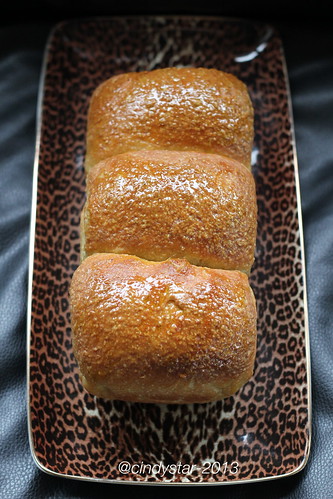
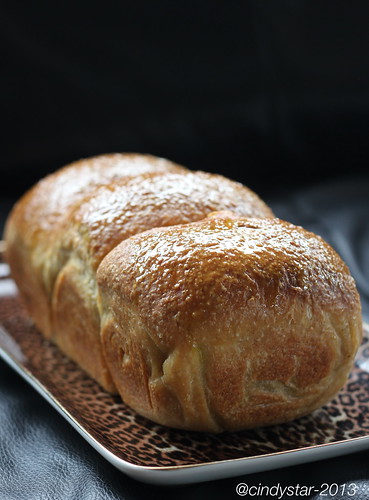
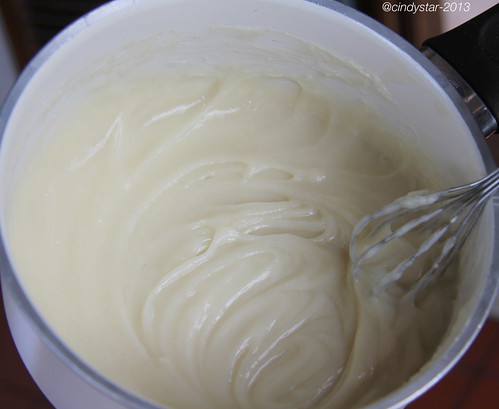
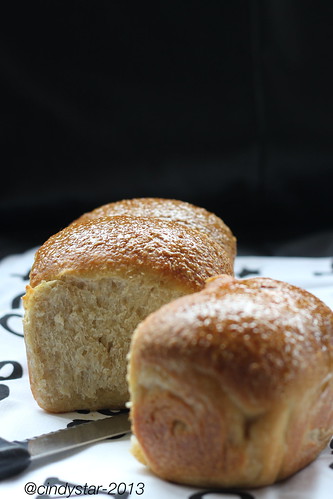
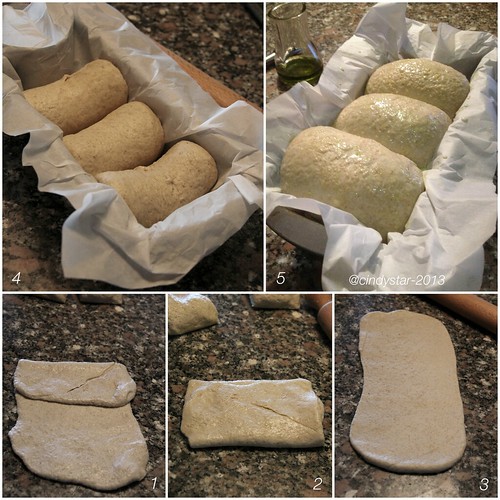














2 commenti:
Love the interesting variation
Amrita, thanks, Happy Easter! :-)
Posta un commento
grazie della visita e gentilmente firma sempre i tuoi commenti!
thanks for passing by and please sign up your comments!